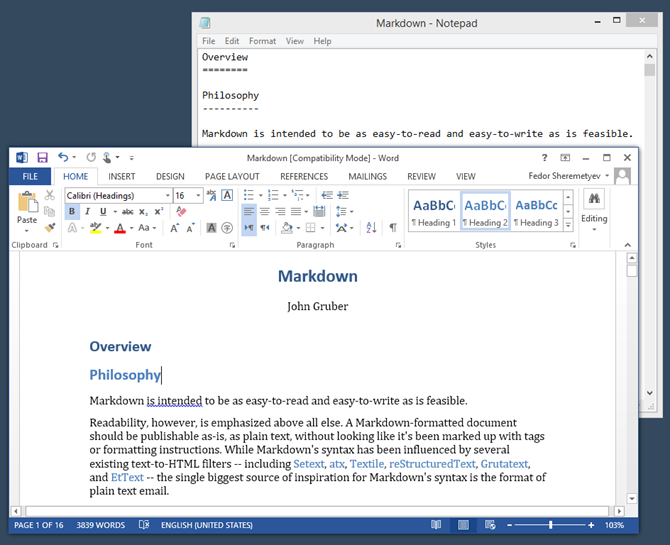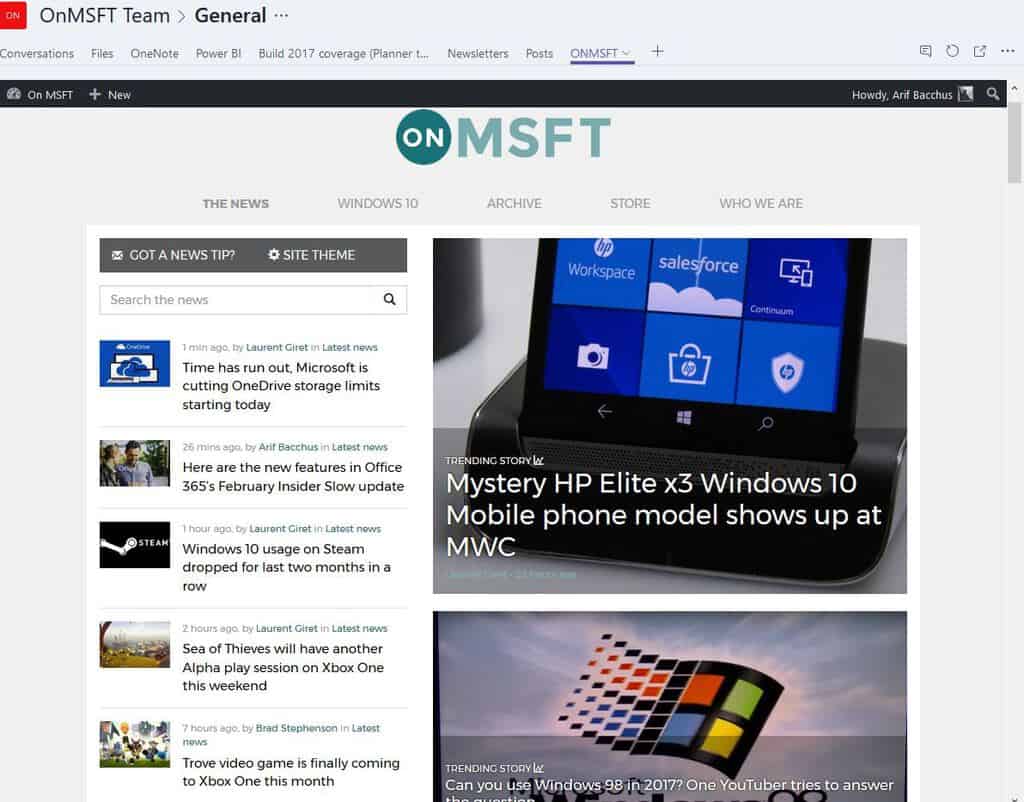- Office 365 Markdown Download
- Microsoft Markdown
- Office 365 Markdown Editor
- Office 365 Markdown Software
- Office 365 Markdown Tool
Create an actionable message card
Let's start by creating an actionable message card. We'll start with something simple, just a basic card with an HttpPOST action and an OpenUri action. We'll use the Card Playground to design the card.
Office365 mac ダウンロード. By popular request, we’ve introduced a weekly digest so that you can review Message Center communications via email. It is easy to share an email with.

Important
Office connectors only support the legacy MessageCard format for cards. They do not support the Adaptive Card format.
Office 365 Markdown Download
Go to Card Playground and paste in the following JSON:
Feel free to experiment with this simple example in the playground. You can see the message card reference for details on the available fields. Once you have a card you're happy with, you can move on to sending it.
Sending actionable messages via Office connectors
Connectors use webhooks to create Connector Card messages within an Office 365 group. Developers can create these cards by sending an HTTP request with a simple JSON payload to an Office 365 group webhook address. Let's try posting some basic cards to a group.

You'll need an Microsoft 365 subscription to proceed. If you do not have an Microsoft 365 subscription you can get a one year FREE Microsoft 365 subscription under the Microsoft 365 Developer Program.
Get a connector webhook URL for a Microsoft 365 Group
Log on to Outlook on the web at https://outlook.office.com.
In the folder list, select a group under the Groups section. In the group's menu, select the ellipses (...), then select Settings.
In the Group Settings pane, select Connectors.
Locate and select the Incoming Webhook connector in the list of available connectors.
Enter a name for this connector and choose Create.
Copy the webhook URL that is displayed and save it. Choose Done.
The webhook URL should look similar to the following:
Send the message
Use Postman to post an actionable message payload to the webhook URL. Open Postman. Create a new tab if needed and configure the tab as follows:
Click the GET and change to POST.
In the text box labeled
Enter request URLpaste the webhook URL.Click Body underneath the URL, then select the raw option.
Click Text and change to JSON (application/json).
Enter the message card JSON in the text area below.
The Postman window should look like this when you are done:
Click Send to post the message.
Microsoft Markdown
Topics Map > Features and Functionality > Client Capabilities > DesktopBy default, messages that are sent to you are stored in your Inbox. But you can organize your messages into a hierarchical folder system and adjust it as your needs change.
Default folders
Each account starts with these default folders:

- Inbox: Incoming messages arrive in your Inbox unless you've created an Inbox rule to redirect them to another folder, or they're identified as junk email.
- Drafts: If you create or respond to a message, but can't finish it right away, it will automatically be saved to your Drafts folder. You can come back to the message later to continue editing it, and then send it.
- Sent Items: By default, a copy of every message you send is put in your Sent Items folder.
- Deleted Items: When you delete a message, it's moved to the Deleted Items folder.
- Archive: Archive folder can be used to store email messages that you no longer want to keep in any of your other folders. Learn more.
- Clutter: Can help you filter low-priority email, saving time for your most important messages. Getting Started with Clutter has more information about Clutter, including how to disable this function.
- Junk Email: Messages that have junk email characteristics but that aren't blocked by a spam filter before they reach your mailbox will automatically be moved to this folder. Learn about junk email and phishing has more information about your Junk Email folder.
- Notes: You must use Outlook to create or edit items in this folder.
You may see other folders that have been created by your administrator.
Note: If you don't see a list of any folders, your Folder Pane may be hidden. Near the top-left corner of the application, you should see an arrow that when hovered over displays the tooltip, 'Click to expand Folder Pane'. Click this arrow to expand and view your folders.
Right-click menu for folders
Most of what you can do with a folder will be found in the right-click menu. Actions you can take include:
Office 365 Markdown Editor
- Open in New Window: This will open the folder in a new window.
- New Folder: Use this to create a new sub-folder in the folder you right-clicked.
- Rename Folder: Rename the folder. You can't rename the default folders, such as the Inbox folder.
- Copy Folder: This will copy the folder as a subfolder to the destination selected in the popup window.
- Move Folder:Opens a window where you can select a folder to move this folder to. You can also move a folder by clicking it and dragging it to where you want it.
- Delete Folder: Delete the entire folder. Delete will move the folder to the Deleted Items folder.
- Mark all as read: Marks every item in the folder as read.
- Clean Up Folder: This will remove redundant messages in the selected folder and move them to your Deleted Items folder.
- Delete All: Deletes everything in the folder, including any sub-folders. Warning: These messages are not easily recoverable.
- Show in Favorites/Remove from Favorites: Adds the current folder to your Favorites.
- Sort Subfolders A to Z: This will sort the subfolders of the selected folder alphabetically.
- Move up/down Will move the selected folder up or down.
- Properties: Allows you to manage your autoarchive, permissions, and other settings related to your account.
Creating folders
You can create additional folders to organize your messages any way you want. For example, you can create a folder for a specific project, or for all messages sent by a particular person, or all messages sent to a distribution group that you're a member of.
To create a new folder, right-click the parent folder you want to create the new folder in. If you want a top-level folder (a folder at the same level as your Inbox), you would use your mailbox as the parent folder.

To create a folder within your account:
- Right-click your account.
- Click New folder.
- Type the name you want to use for this folder.
- Press Enter or click away.
Moving folders
There are two ways to move a folder using Outlook 2016 for Windows.
- One way is to click on the folder you want to move and drag it to the destination folder.
- Alternatively, right-click the folder you want to move and click Move. A window will pop up that allows you to select a destination folder. Clicking on OK will move the original folder and all of its contents to the selected destination folder. Or click Cancel to close the move folder window without moving the folder.
- Additionally, you can create a new folder to move the original folder into by clicking on the New... button.
The Deleted Items folder
When you delete a message, it is first moved to the Deleted Items folder. You can either leave the messages there, or you can set Outlook to automatically empty your Deleted Items folder when you sign out. Your administrator may have set up a policy to empty items from your Deleted Items folder after they've been there for a preset number of days. For example, there may be a policy that deletes any message that has been in your Deleted Items folder for 30 days.
Recover deleted items
If your administrator has enabled the recover deleted items feature, you can use it to recover items that have been deleted from your Deleted Items folder. How long items will be recoverable depends on settings that are controlled by your administrator.
- Go to FOLDER tab.
- Click Recover deleted items from within 'Clean Up' group..
- Click the item you want and then click Recover Selected Items button. The item will be moved to its default location. Messages will go to your Inbox, calendar items will go to your Calendar, contacts to your Contacts folder, and tasks to your Tasks folder.
You can also select Purge to permanently delete an item. If you purge an item, you won't be able to use Recover deleted items to get it back. Purging a message will not remove it from any backups that were made before you purged it.
Office 365 Markdown Software
Favorites
It's not unusual to end up with so many folders that it can be hard to keep track of which ones are most important to you. To make it easier to keep track of those folders, you can add them to your Favorites. Favorites don't appear in your folder list until you've added at least one folder to Favorites. Adding a folder to Favorites doesn't move the folder, but creates a link to it.
- To add a folder to Favorites, right-click it and click Show in Favorites.
- You can re-order folders in Favorites by clicking and dragging, or by right-clicking and then clicking Move up or Move down.
- To remove a folder from Favorites, right-click it in Favorites and click Remove from Favorites. This only removes the link to the folder from Favorites; it won't delete the folder from your mailbox.
What else do I need to know?
Office 365 Markdown Tool
- If you want to create a personal information folder as a sub-folder to a mail folder, you can create the folder and then move it to the location you want. Some folders, for example, the Inbox, can't be moved to another location.
- Similarly, some folders, for example, the Inbox, can't be renamed. If the folder can't be renamed, the Rename Folder option in the menu will be grayed out and unclickable.
- After you delete a folder, it's moved to the Deleted Items folder. The folder isn't permanently removed until you empty/purge the Deleted Items folder or delete the folder from the Deleted Items folder.
